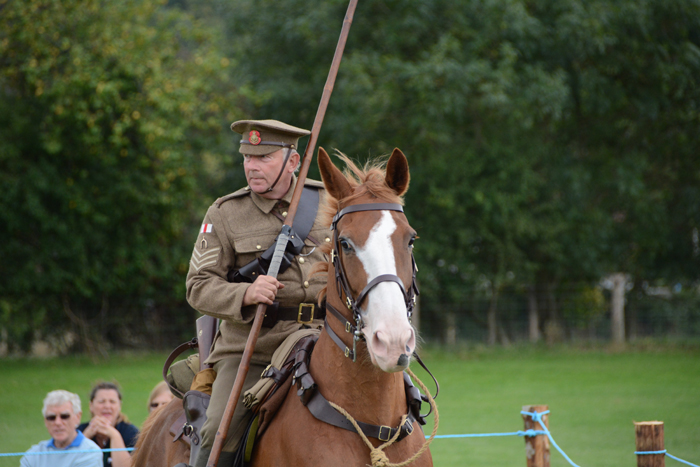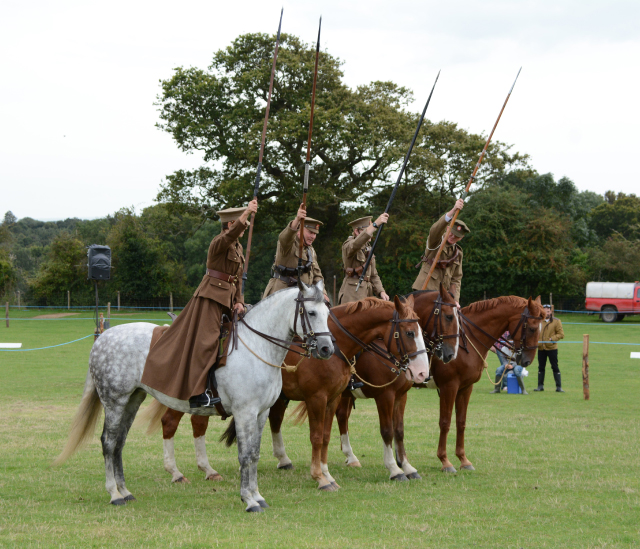Following their mobilisation in 1914 the Sussex Yeomanry was soon deployed to Gallipoli in 1915.
The South-East Mounted Brigade (of which Sussex Yeomanry was a part) was attached to the 42nd Division, a Territorial Infantry Division from the Manchester area. This Division was very much the worse for wear from heavy fighting and dysentery. It was important that members of the S.E.M.B. took their place in the line as soon as possible. Officers and N.C.O.s were introduced to the front line for short periods of time so that they could familiarize themselves with what was required of them. This started to happen on October 8th 1915 – on October 9th the first case of dysentery occurred in the Regiment.
Dysentery was a huge problem and decimated the strength of all units on the Peninsular. There were great clouds of flies and little sanitation. At times, it was impossible to cook or eat between 08.00 and 20.00 because of the flies. At night, the blanket-lined roofs of the dug-outs would be black with a layer of flies.

Sussex Yeomanry Historical Group – Image from LRG Photography
The trenches were not very deep and had been dug where the initial landings and advance had finished in August. There was little equipment for digging or constructing the trenches and barbed wire protection was minimal. As happened in Europe, there was a stalemate with a no-man’s-land about 50-60 yards wide. What the British did have however – and the Turks did not – were catapults for throwing ‘cricket ball’ bombs. These bombs were circular iron balls filled with explosives with a fuse. The catapult would be wound back, the bomb placed in the sack and the fuse lit. After a moment, the trigger would be pulled and the bomb discharged. Accidents often occurred. In one case, three officers of the East Kents died when the bomb slipped from the sack when the bomb was discharged.
There was a great deal of sniping and it was important to keep one’s head down. In general, the Turks had the advantage in that their positions tended to be a little higher than those of the British. Mining and counter-mining was carried out but to little advantage to either side. When not in the line the Regiment was expected to provide work parties to help with the mining and the off-loading of lighters. Not only did dysentery decimate the Regiment – so did exhaustion.
By November the weather had started to get very cold and wet. On November 26th the Regiment was in the front line and suffered the effects of a blizzard. Although conditions were bitter, other Regiments suffered worse! Men drowned in some trenches and were frozen solid.
On December 8th newspapers from England arrived stating that the Peninsular must be evacuated. It was felt by the troops that the press could have been a little more discrete. For the British forces to extricate themselves was not going to be easy. There was no need to let the Turks know in advance.
On 30th December the Regiment received instructions to move down to the beach for evacuation onto the SS Princess Alberta. Once on deck most officers and men found a space to lie down and catch up on much needed sleep.
The Regiment was disembarked at Mudros and had to march three miles to its camp. Everyone’s feet were in such bad condition from the wet in the trenches that it was only possible to march for a few minutes at a time.
The Regiment had arrived in the Peninsular at the start of October and left at the end of December. During this time its strength had reduced by 50%. This was largely due to disease. The actual number of men who were killed or who died was 28. 30 were wounded, the majority of the rest caught dysentery though many eventually recovered and re-joined the Regiment.
Until the feet of the men in the Regiment had recovered there was little that could be done. Once they showed improvement however training re-started. This comprised route marches, drill, live firing and in the afternoon sport. An athletic meeting was held and the Sussex Yeomanry tug-of-war team beat the 32nd Infantry Brigade and the Lowland Mounted Brigade. A marathon race was held on January 28th 1916. One of the Regiment’s Sergeants (Sgt Welfare) was a well-known runner in the UK – on this occasion he was running strongly and well when he collapsed and died. This cast a shadow over a period when things were improving after Gallipoli.
The Regiment was deloused and everyone had the chance of a warm bath. This was much appreciated, even though the bath houses themselves were very drafty and bitterly cold.
On 2nd February 1916 the Regiment embarked on H.M.T. Caledonia – destination unknown. On 7th February the ship entered the harbor at Alexandria. The weather was reminiscent of Liverpool – low clouds and drizzle.
Having disembarked a new Draft was found to be waiting for the Regiment. They were immediately asked how they were equipped. Their answer was ‘bandoliers and swords’.
As you can imagine, the prospect of returning to a mounted role raised everyone’s spirits enormously.
This story was submitted by John Dudeney of the Sussex Yeomanry Historical Group








